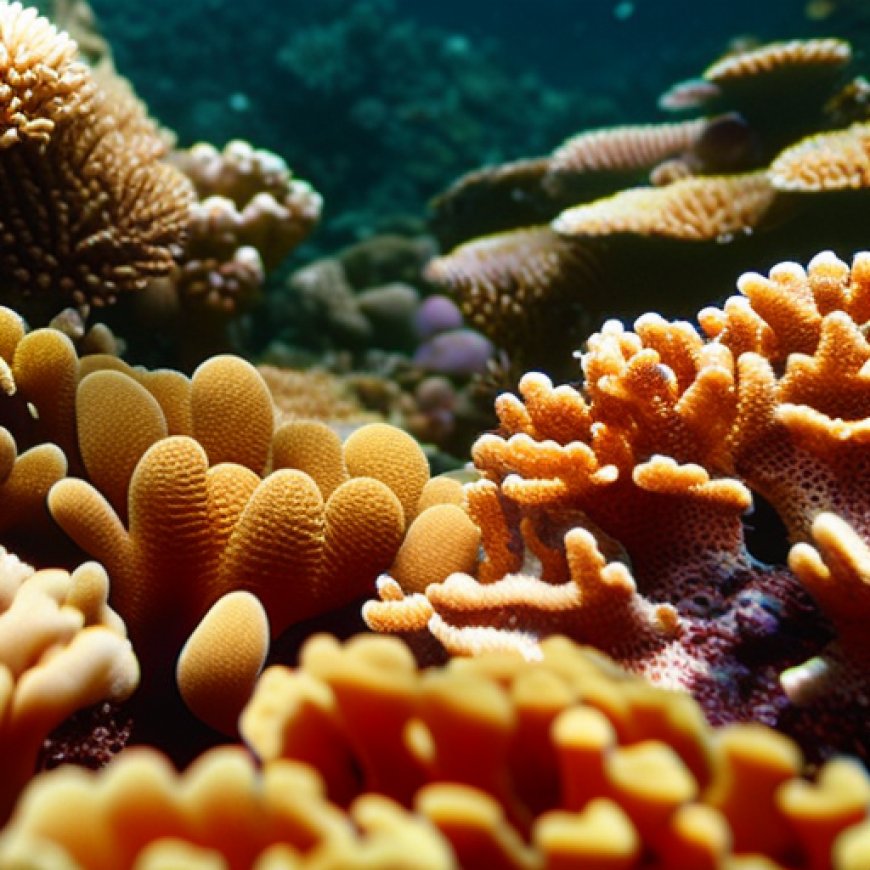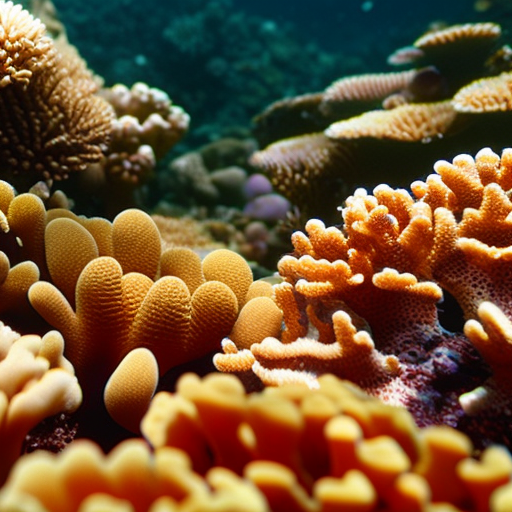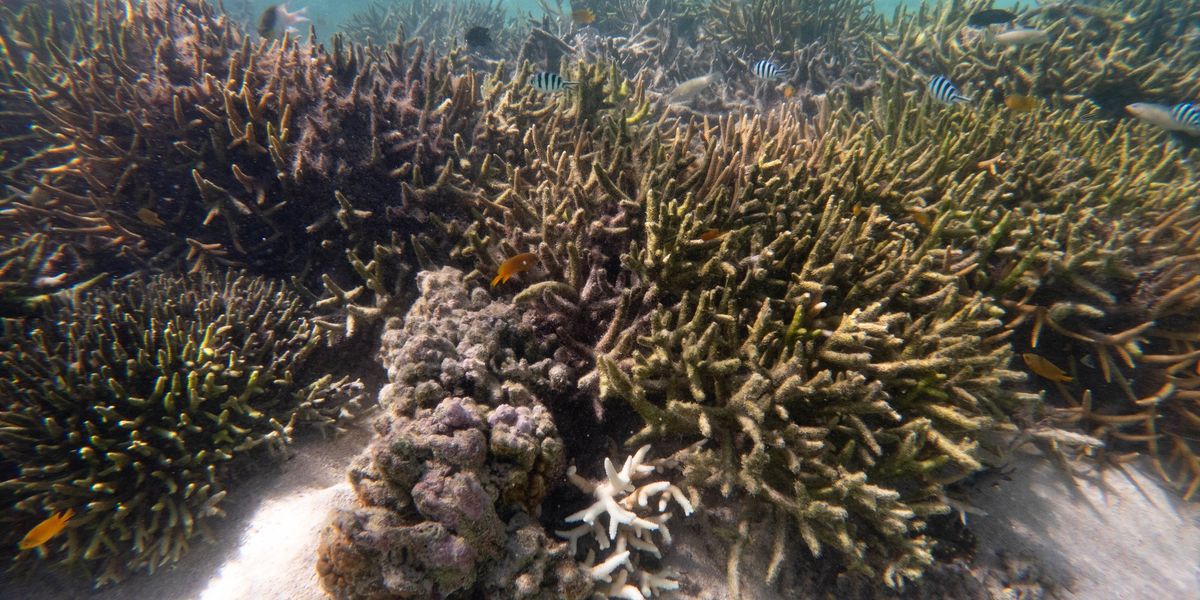‘Worst I Have Seen’: 75% of Great Barrier Reef Suffers Coral Bleaching | Common Dreams
'Worst I Have Seen': 75% of Great Barrier Reef Suffers Coral Bleaching Common Dreams


Coral Bleaching in the Great Barrier Reef

Marine conservationists have issued a warning that Australia’s Great Barrier Reef is currently experiencing its worst-ever coral bleaching event due to record ocean heat caused by the worsening climate emergency.
Bleached Corals Found at Record Depths
The Australian Marine Conservation Society (AMCS) has reported that bleached corals have been discovered at depths of up to nearly 60 feet, and some corals are beginning to die as they face record marine heatwaves.
Impact of Climate Change on Coral Bleaching
The AMCS explains that corals bleach when they are exposed to warmer waters for an extended period, such as during marine heatwaves driven by climate change. This causes them to expel the algae that inhabit them, which is their main energy source, leading to starvation and sometimes death.
Extent of Bleaching in the Great Barrier Reef
Data collected from aerial surveys indicates that 75% of the Great Barrier Reef has experienced bleaching during this event. The U.S. National Oceanic and Atmospheric Administration previously warned that this could be the worst bleaching event ever observed globally.
Unprecedented Fifth Mass Coral Bleaching
The AMCS campaign manager for the Great Barrier Reef, Lissa Schindler, stated that this event marks the fifth mass coral bleaching in eight years, surpassing the severity of the previous two events in 2020 and 2022. It may even rival the worst bleaching event on record in 2016.
Unprecedented Marine Heatwaves
Some regions in the southern reef have experienced unprecedented marine heatwaves, with elevated water temperatures for a record 14.57 degree heating weeks (DHW). This breaks the previous record of 11.8 DWH set in April 2020, according to data from the U.S. government’s National Oceanic and Atmospheric Administration.
Expert Concerns and Global Impact
Renowned coral reef expert Selina Ward expressed her devastation at witnessing the severity of this bleaching event. She reported extensive bleaching at all 16 sites she visited along the southern Great Barrier Reef and highlighted the diverse range of species affected. This event is not limited to Australia or the Southern Hemisphere, as the Caribbean also suffered its worst recorded bleaching event following the planet’s hottest summer on record last year.
Potential Coral Mortality
The last global bleaching event occurred from 2014 to 2017, resulting in major coral deaths in approximately 15% of all reefs. During that time, nearly a third of the Great Barrier Reef’s coral perished. This current event could potentially surpass that level of mortality.
Call for Urgent Action
Ward emphasized the need for immediate action to prevent further loss of the Great Barrier Reef. She called for a reduction in emissions and an end to new fossil fuel developments. The urgency of the situation leaves no room for excuses.
SDGs, Targets, and Indicators
1. Which SDGs are addressed or connected to the issues highlighted in the article?
- SDG 13: Climate Action
- SDG 14: Life Below Water
2. What specific targets under those SDGs can be identified based on the article’s content?
- SDG 13.1: Strengthen resilience and adaptive capacity to climate-related hazards and natural disasters
- SDG 14.2: Sustainably manage and protect marine and coastal ecosystems
- SDG 14.7: Increase the economic benefits to small island developing states and least developed countries from the sustainable use of marine resources
3. Are there any indicators mentioned or implied in the article that can be used to measure progress towards the identified targets?
- Indicator for SDG 13.1: Number of countries that have implemented plans to reduce the risks and impacts of climate-related hazards
- Indicator for SDG 14.2: Proportion of total research budget allocated to research in the field of marine technology
- Indicator for SDG 14.7: Sustainable fisheries as a percentage of GDP in small island developing states and least developed countries
4. Table: SDGs, Targets, and Indicators
| SDGs | Targets | Indicators |
|---|---|---|
| SDG 13: Climate Action | 13.1: Strengthen resilience and adaptive capacity to climate-related hazards and natural disasters | Number of countries that have implemented plans to reduce the risks and impacts of climate-related hazards |
| SDG 14: Life Below Water | 14.2: Sustainably manage and protect marine and coastal ecosystems | Proportion of total research budget allocated to research in the field of marine technology |
| 14.7: Increase the economic benefits to small island developing states and least developed countries from the sustainable use of marine resources | Sustainable fisheries as a percentage of GDP in small island developing states and least developed countries |
The article highlights the issues of coral bleaching in the Great Barrier Reef, which is connected to SDG 13 (Climate Action) and SDG 14 (Life Below Water). The specific targets identified under these SDGs are SDG 13.1 (Strengthen resilience and adaptive capacity to climate-related hazards and natural disasters), SDG 14.2 (Sustainably manage and protect marine and coastal ecosystems), and SDG 14.7 (Increase the economic benefits to small island developing states and least developed countries from the sustainable use of marine resources).
The article mentions indicators that can be used to measure progress towards these targets. For SDG 13.1, the indicator is the number of countries that have implemented plans to reduce the risks and impacts of climate-related hazards. For SDG 14.2, the indicator is the proportion of total research budget allocated to research in the field of marine technology. And for SDG 14.7, the indicator is sustainable fisheries as a percentage of GDP in small island developing states and least developed countries.
Overall, the article highlights the urgent need for climate action and sustainable management of marine ecosystems to address the coral bleaching crisis in the Great Barrier Reef.
Behold! This splendid article springs forth from the wellspring of knowledge, shaped by a wondrous proprietary AI technology that delved into a vast ocean of data, illuminating the path towards the Sustainable Development Goals. Remember that all rights are reserved by SDG Investors LLC, empowering us to champion progress together.
Source: commondreams.org

Join us, as fellow seekers of change, on a transformative journey at https://sdgtalks.ai/welcome, where you can become a member and actively contribute to shaping a brighter future.







